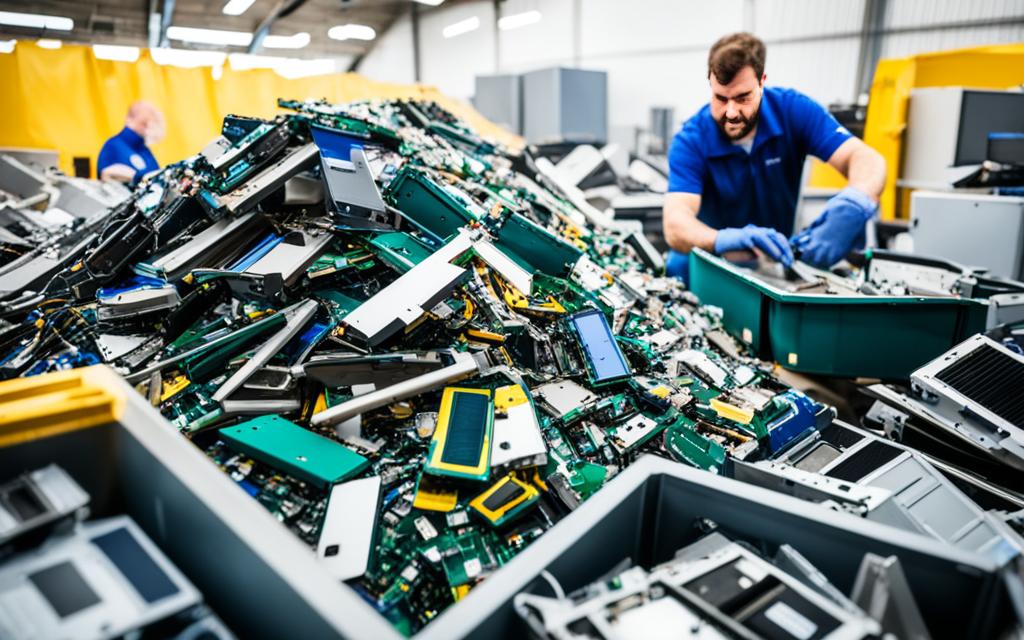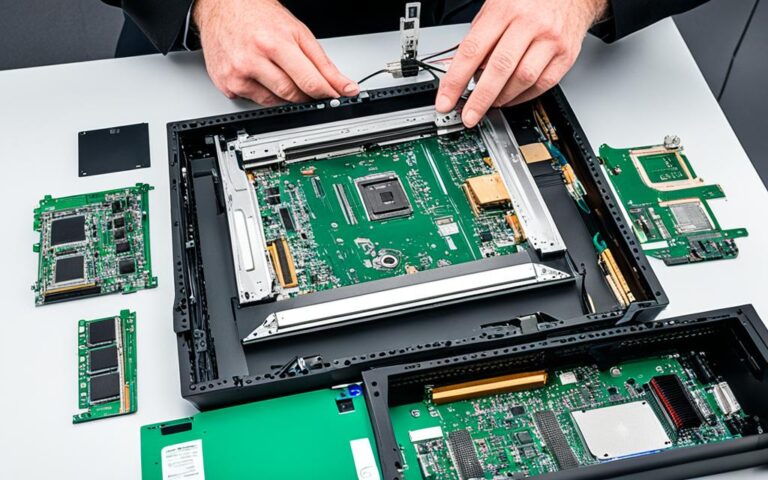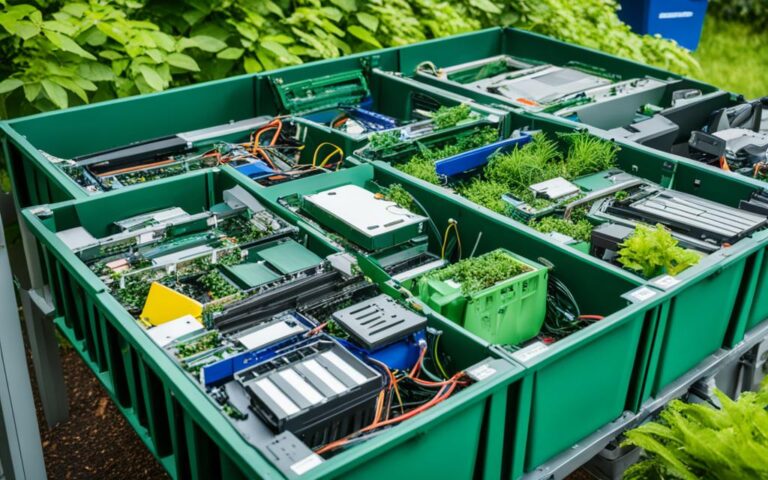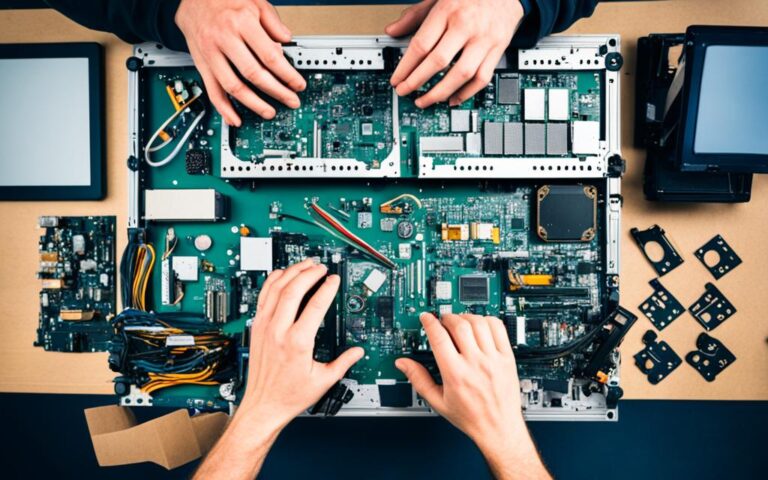Reviving the Planet: The Impact of Desktop Computer Recycling
In today’s rapidly evolving world, technology has become an integral part of our lives. From staying connected to accomplishing tasks, desktop computers have become indispensable. However, with the constant upgrades and advancements in technology, the question of what happens to the old desktop computers has become increasingly important.
Desktop computer recycling is not only crucial for promoting sustainability but also has a significant impact on environmental conservation. With the amount of computer waste increasing due to population growth, lack of reuse, and affordability of IT hardware, the need for proper disposal and recycling is more important than ever.
Improper disposal of IT equipment can have detrimental effects on our environment. Hazardous chemicals can be released into the water system, contributing to water pollution. Moreover, improper disposal leads to the accumulation of e-waste, taking up precious space in landfills and increasing the risk of toxic substances seeping into the soil.
By embracing desktop computer recycling, we can mitigate these negative impacts. Recycling saves energy and reduces the need for manufacturing new IT hardware, resulting in a significant reduction in carbon emissions. It also helps preserve natural resources, such as metals and minerals, by reusing the existing materials.
Moreover, desktop computer recycling has a positive effect on the economy. It creates job opportunities in the recycling industry and provides affordable hardware to lower-income individuals who may not be able to afford new computers.
Additionally, refurbishment and export of IT equipment can benefit developing countries by providing them with access to affordable technology. This can help bridge the digital divide and promote education and economic growth in these regions.
Furthermore, recycling desktop computers reduces landfill congestion, allowing us to make better use of limited landfill space. By diverting e-waste from landfills, we can make significant progress towards a more sustainable future.
Reviving the planet through desktop computer recycling is not just a responsibility but also an opportunity. By taking the necessary steps to properly dispose of and recycle our old desktop computers, we can make a positive impact on the environment, contribute to a circular economy, and pave the way for a more sustainable future.
The Role of Desktop Computer Recycling in Schools
Schools play a significant role in the growing e-waste problem as they regularly upgrade their IT systems due to aging and wear and tear. This constant need for newer technology leads to a surplus of discarded desktop computers, adding to the overall environmental impact. However, desktop computer recycling offers schools a sustainable solution that not only benefits the environment but also brings financial advantages.
By opting for refurbished equipment, schools can significantly reduce their IT infrastructure expenditure. This approach provides a cost-effective alternative to purchasing new devices, allowing budget-conscious institutions to allocate their resources more efficiently. In doing so, schools can divert funds towards educational programs and initiatives, ultimately benefiting their students.
“The Inspiration Trust in East Anglia achieved a remarkable 40% reduction in IT infrastructure costs by partnering with a specialist recycling company.”
A successful example is the Inspiration Trust based in East Anglia, which achieved commendable financial savings by collaborating with a specialized recycling company. Through this partnership, the trust managed to significantly decrease its IT infrastructure expenditure, allowing them to allocate funds to other critical areas within their educational network.
“The Oldershaw School in Wallasey equipped three IT suites within their budget by using refurbished PCs.”
Similarly, the Oldershaw School in Wallasey found success in equipping three IT suites within their budget by utilizing refurbished desktop computers. By opting for these cost-effective alternatives, the school was able to allocate their limited resources strategically, ensuring their students had access to cutting-edge technology without compromising their financial stability.
Moreover, desktop computer recycling in schools not only provides financial benefits but also extends the lifespan of devices. By incorporating recycling practices into their IT policies, schools can ensure that their desktop computers are utilized to their full potential. The refurbishment and reuse of IT equipment enable schools to maximize the value of their existing resources, minimizing unnecessary waste and contributing to a more sustainable environment.
In addition to desktop computer recycling, schools can further foster sustainability by implementing other recycling practices within their premises. Encouraging recycling for paper, waste food, water conservation, and promoting waste-free lunches are just a few ways schools can cultivate a culture of environmental responsibility among students and staff.
Benefits of Desktop Computer Recycling in Schools:
| Benefits | Description |
|---|---|
| Cost Savings | Refurbished equipment reduces IT infrastructure expenditure, freeing up resources for educational programs. |
| Extended Lifespan | By reusing IT equipment, schools can maximize the value of their devices and minimize unnecessary waste. |
| Sustainability | Implementing recycling practices within schools fosters a culture of environmental responsibility. |
The Global Challenge of E-Waste and the Need for Circular Economy
E-waste poses a significant global challenge, with the world generating a staggering 53.6 million tonnes of electronic waste in 2019. Shockingly, only 17.4% of these materials were recycled. This alarming statistic highlights the urgent need for sustainable solutions to address the mounting problem of e-waste.
Aside from the sheer volume of waste, e-waste also has severe environmental implications, contributing to resource depletion and energy loss. If left unaddressed, the UN forecasts that e-waste generation will reach a staggering 74.7 million tonnes by 2030, further exacerbating the sustainability crisis.
The Circular Electronics Partnership (CEP) endeavors to combat this challenge by bringing together experts and businesses to collaboratively design and implement sustainable solutions in the electronics industry. By prioritizing the concept of circularity in product design, stakeholders can disrupt the linear model of production and consumption, minimizing waste generation and fostering responsible resource management.
Building circularity into product design is crucial for addressing the e-waste crisis and promoting a sustainable future.
Fairphone, a renowned company championing sustainability in the electronics industry, exemplifies the potential for positive change. Through their innovative approach to smartphone design, Fairphone focuses on prolonging the lifespan of their devices by incorporating modular design and repairability. This ethos not only reduces the production of e-waste but also encourages consumers to hold onto their smartphones for longer, minimizing their ecological footprint.
However, addressing the global challenge of e-waste requires a collective effort. Governments, tech companies, and consumers all play integral roles in promoting a circular economy for electronics. Governments can enact legislation and establish recycling frameworks that incentivize sustainable practices. Tech companies, on the other hand, can implement recycling programs and explore innovative technologies for efficient disassembly and recovery of materials from discarded devices.
Ultimately, consumers have the power to drive change through their purchasing and disposal choices. By embracing circularity and prioritizing longevity over constant upgrades, individuals can contribute to a more sustainable electronics industry and reduce their environmental impact.
Illustrative Data on E-Waste Generation
| Year | E-Waste Generation (Million Tonnes) | Percentage Recycled |
|---|---|---|
| 2019 | 53.6 | 17.4% |
| 2030 (Projected) | 74.7 | N/A |
By addressing the global challenge of e-waste and embracing circular economy principles, we can pave the way towards a more sustainable future, minimizing environmental impact and promoting responsible resource management.
Innovations and Efforts in Sustainable Electronics Industry
The sustainable electronics industry is continually evolving with various innovations and efforts aimed at promoting recycling, circularity, and consumer empowerment. Tech giants like Apple and Dell are leading the way by offering incentives for customers to recycle their old devices, encouraging responsible disposal and minimizing electronic waste (e-waste). These initiatives contribute to reducing the environmental impact of the electronics industry and promoting a more sustainable future.
Smartphones4Good, an inspiring initiative, focuses on giving devices a second life by repurposing them for female entrepreneurs in Africa. By providing refurbished smartphones, Smartphones4Good not only helps bridge the digital divide but also reduces the overall demand for new electronic devices. This approach aligns with the principles of a circular economy, where resources are maximized, and waste is minimized through reuse and repurposing.
An excellent example of recycling innovation is Apple’s Daisy robot. This state-of-the-art technology enables efficient disassembly and recovery of materials from old devices, ensuring that valuable resources are extracted and reused. By implementing robotics and automation in the recycling process, Apple showcases a commitment to sustainable practices and reducing the environmental impact of their products.
“Compliance and enforcement of e-waste policies are crucial for promoting recycling and circularity,” emphasizes James Johnson, an environmental policy expert. “Governments play a vital role in developing and implementing regulations that hold businesses accountable for their e-waste management practices.”
Furthermore, the right to repair legislation is gaining momentum worldwide. In the European Union (EU) and some states in America, this legislation advocates for consumers’ ability to repair electronic devices, giving them more control over their devices’ lifespan and reducing the need for premature replacements. Consumer behavior also plays a significant role in achieving a sustainable electronics industry. Shifting attitudes towards valuing and utilizing devices for longer periods can significantly reduce the environmental impact of the industry.
To summarize, the sustainable electronics industry is witnessing innovative approaches, such as incentivizing recycling, repurposing devices, leveraging technology for efficient recycling, and advocating for the right to repair. These efforts, coupled with consumer behavior changes, are essential for a more sustainable and circular electronics industry that values resource conservation and environmental responsibility.
Conclusion
Desktop computer recycling plays a vital role in promoting sustainability and environmental conservation. By recycling IT equipment, we prevent hazardous chemicals from being released into the environment and reduce the need for new hardware manufacturing. This not only protects our planet but also conserves valuable natural resources.
Furthermore, embracing refurbished equipment in schools can lead to significant cost savings. By utilizing recycled computers, schools can allocate their budgets more efficiently, ensuring that funds are available for other important educational resources and programs. This not only benefits the schools but also contributes to a more sustainable approach to technology consumption.
The global e-waste problem calls for a transition to a circular economy for electronics. Our current linear model of production and consumption is not sustainable, as it leads to the accumulation of electronic waste and the depletion of resources. By adopting a circular economy approach, we can minimize waste, maximize the lifespan of electronic devices, and create a more sustainable future.
Efforts and innovations in the sustainable electronics industry, coupled with changes in consumer behavior, are crucial for achieving a truly circular economy. Companies like Apple and Dell are incentivizing customers to recycle their old devices, while initiatives like Smartphones4Good are repurposing electronics for social good. Additionally, the right to repair legislation empowers consumers to extend the lifespan of their devices. However, achieving a truly circular economy requires continued collaboration between governments, businesses, and individuals.
FAQ
Why is desktop computer recycling important for sustainability and environmental conservation?
Desktop computer recycling is important for sustainability and environmental conservation because it prevents hazardous chemicals from being released into the environment and reduces the need for new hardware manufacturing, which saves energy and preserves natural resources.
How can schools benefit from desktop computer recycling?
Schools can benefit from desktop computer recycling by embracing refurbished equipment, which offers a cost-effective solution to reduce IT infrastructure expenditure. This can lead to significant cost savings and extend the lifespan of devices.
What is the global challenge of e-waste and why is a circular economy necessary?
E-waste poses a significant environmental challenge due to resource depletion and energy loss. A circular economy is necessary to address this challenge by promoting recycling and reusing electronic devices, reducing landfill congestion, and preserving valuable resources.
What are some innovations and efforts in the sustainable electronics industry?
The sustainable electronics industry is witnessing innovations such as modular design and repairability, as seen in companies like Fairphone. Additionally, initiatives like Smartphones4Good repurpose old devices for female entrepreneurs in Africa. Compliance with e-waste policies and the right to repair legislation are also contributing to a more sustainable future.
What is the importance of consumer behavior in promoting a sustainable electronics industry?
Shifting consumer behavior towards using devices for longer and valuing what they have is essential for reducing electronic waste and promoting a sustainable electronics industry. Consumers can make a significant impact by choosing to recycle their old devices, embracing repairability, and supporting companies that prioritize sustainability.
How can continued collaboration between governments, businesses, and individuals contribute to a circular economy?
Continued collaboration between governments, businesses, and individuals is essential for achieving a truly circular economy. Governments can enforce e-waste policies, businesses can design sustainable solutions, and individuals can make conscious choices in their purchasing and disposal habits. Together, these efforts can create a more sustainable future for the electronics industry.













